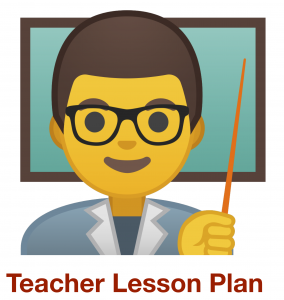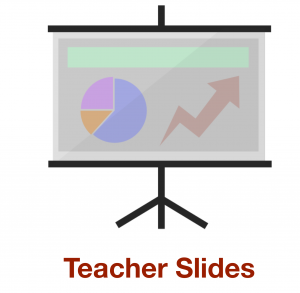A Culturally Relevant CS/ Engineering Curriculum
Welcome to the CS/Engineering curriculum page. You may ask what is a hybrid CS/Engineering curriculum. This curriculum is a part of an ongoing project to build a free online resource for teachers to teach Computer Science and Engineering. Many of our current products, including phones, cars, drones, and computers involve a combination of CS programming and Engineering. As a result, this curriculum intends to teach students how code and design products to meet the needs of consumers. Instead of thinking of consumers as people who will buy products, this curriculum is designed to teach students to be critical problem solvers for their own community. As a culturally relevant curriculum, these materials below provide students with and introduction to key ideas, but will ask students to apply those ideas to culturally relevant community concerns. These concerns can be edited to meet the needs of your local community. With the nation focused improving on improving STEM teaching and engagement, modern curriculum needs to be built with an eye to preparing young people to make a move from their positions as consumers of technology towards becoming producers of technology. This is a difficult transition and is one that must be done with a careful eye towards making STEM learning available for all students. This curriculum offers students an introduction into Computer Science and Engineering.
Computer Science & Engineering
This hybrid engineering and computer science curriculum is designed to prepare students for a new world of innovation, design, and education. As computer scientists develop technology that moves closer to automation of coding, it is important that we value providing students a combination of skills. This curriculum is intended to provide students access to three vital skills:
Design Based-Thinking
One of the most vital skills for students to develop is a capacity to design websites, software, and a hardware that are intended to meet the needs of a specific end-user. The goal is to improve people’s lives by understanding what people need. This curriculum is intended to provide students with an introduction to the basic tenants of design-based thinking
Basic Coding Skills
Even as developers are currently producing software that provides young people opportunities to build websites without understanding coding, it is vital for students to understand the basics of coding languages. This curriculum is intended to provide students with access to the basic skills involved in using to coding languages; Python and HTML. As students learn a number of skills, they will end each unit by developing webpages to demonstrate their work.
Engineering
The third aspect of the curriculum involves teaching students the fundamentals of Engineering. This involves computer science engineering, as students learn to build hardware through 3-D printing, laser printing, and basic electrical engineering tasks. It also provides students with an introduction into structural engineering. The idea is that as students will learn to build hardware, but as they build hardware, they will also learn to code their own software to support these hardware devices.
Culturally relevant approach
This curriculum focuses on making the computer science and engineering relevant to the culture of the students. As students are designing software and hardware, they will design them to address the specific needs of the local community. At times, school-based knowledge can seem abstract and irrelevant, but ensuring that the students are learning about computer science and engineering as it applies to the local environment will produce students who see computer science and engineering as a way to improve their own community. Each lesson is designed to solve a local community problem and will end with students explaining how they are using software or hardware speaks to a specific community need. Although the original curriculum is designed with a Northern California audience in mind, the curriculum is provided in a word document so that every user can customize it to meet the needs of your local student population.
Accommodations and adjustments
We encourage all educators to download the curriculum and to use the curriculum resources, but to make those resources meet your local needs. As educators download and use the instructional materials, be sure to adjust them to fit the problems and context of your local community. This includes changing the time allocations to meet the needs of your students and changing the problems as you see fit.
Curriculum Structure
One common concern about the use of a computer science and engineering curriculum involves the need or desire to incorporate this curriculum into the school calendar. Most states have yet to adopt CS and Engineering specific standards, so introducing this in the normal school day may be challenging. This curriculum is not intended to be used in a traditional school contexts. By contrast, it is intended to be used as an afterschool program where teachers have the flexibility to teach the content as they so desire. However, if you would like to use this in a traditional school curriculum, it can be accommodated to match common core standards. Currently, the goal is to use this curriculum as a supplemental instructional resource where your school can develop its very own CS/Engineering curriculum.
Approach to Learning
This curriculum was designed with a specific focus on learning. Research suggest that people learn when they have multiple opportunities to explain an idea. As opposed to having a teacher or a video speaking to students while students sit passively, each activity is designed to have students reflect, share, and write about the things they are learning. The goal is to produce multiple opportunities for students to explain. We do not expect students to be able to explain all of the concepts correctly in the first iteration. However, through multiple opportunities to write and explain we expect students to master their new coding language an engineering ideas. As such, when you download the student handbooks, you will note that each activity asks students to write, share and explain. It is vital that students are working groups to explain to each other until each student feels comfortable with all of the instructional ideas.
How to use the site
Please watch the brief video below that explains how you can use the website.
Download and Try The Lessons Below
-
Unit 1 Module 1: Our Local Heros – Super Heros are All Around Us
-
Unit 1 Module 2: Who is Watching Who – Video Surveillance & Community Empowerment
-
Unit 1 Module 3: Moving Weight- Programmable Vehicles & Community Support
-
Unit 1 Module 4: Bluetooth Technology and Robotics
-
Unit 1 Module 5: Bluetooth Technology and Robotics


